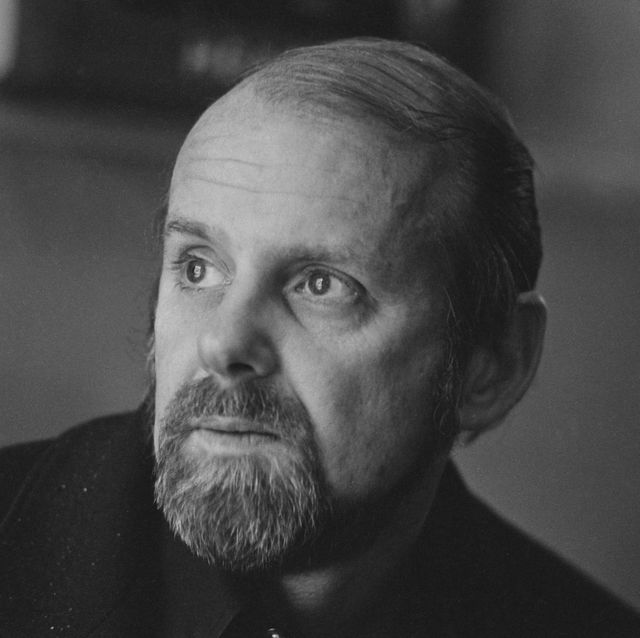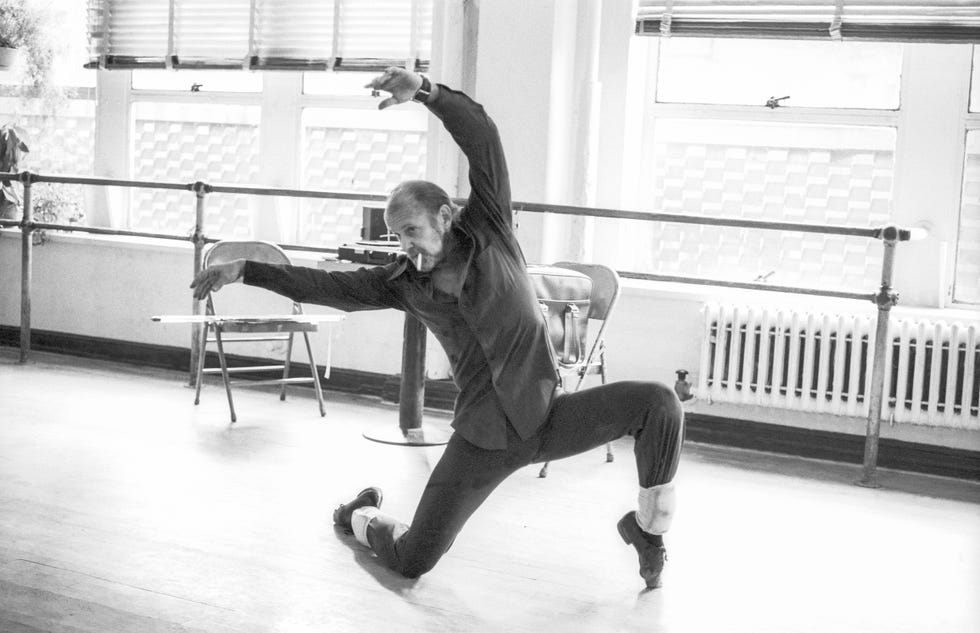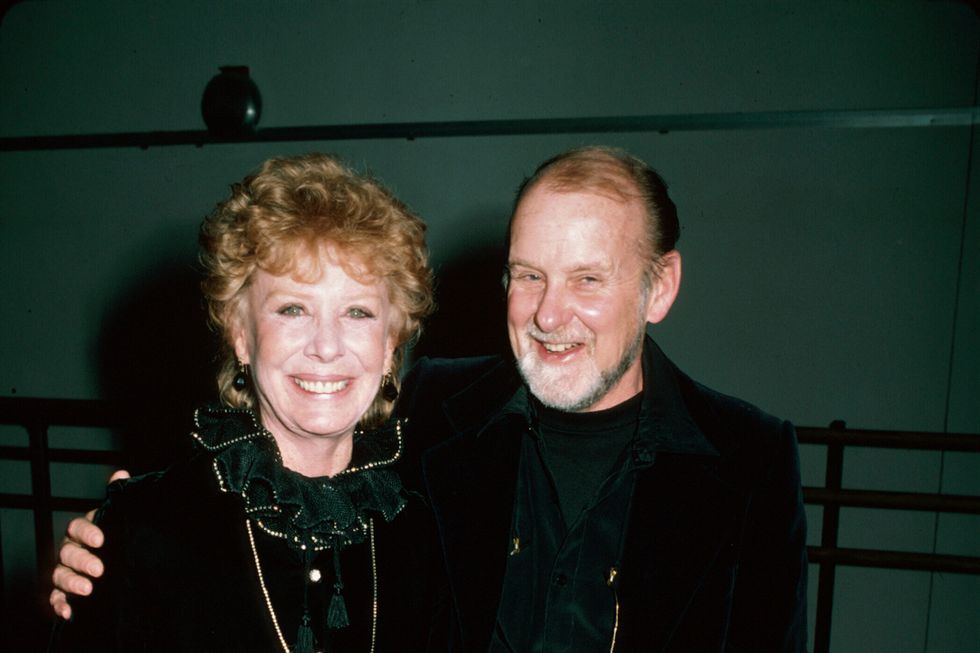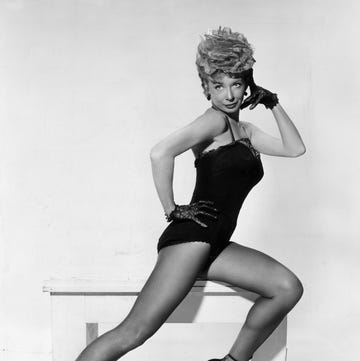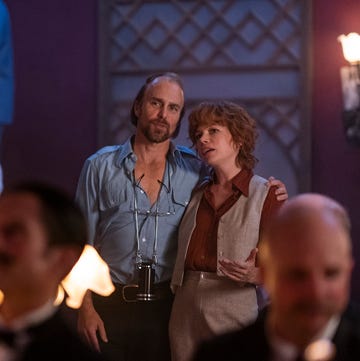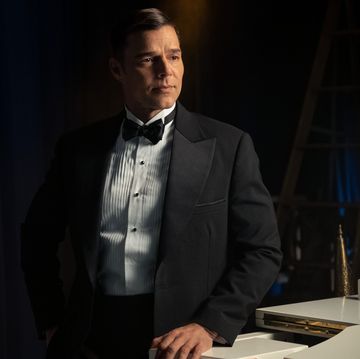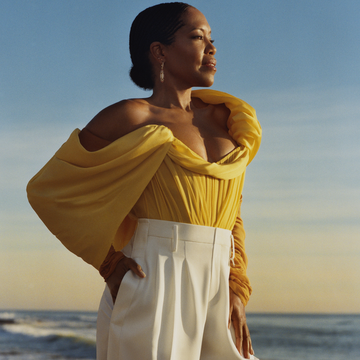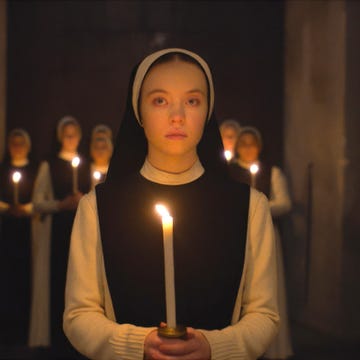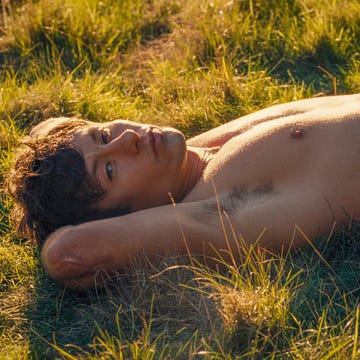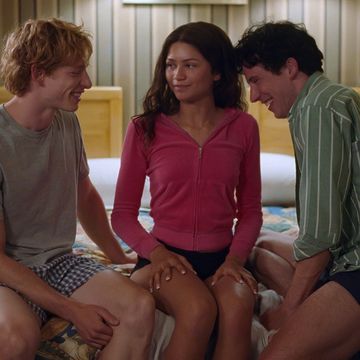Bob Fosse was many things: a legendary director known for Cabaret, All that Jazz, and an array of Broadway hits; an innovative choreographer who pioneered a new style of dance that still resonates today; and a deeply complicated figure whose professional and personal lives are chronicled in FX's compelling new miniseries Fosse/Verdon. Here’s a few must-know facts about the revolutionary choreographer (played by Sam Rockwell) ahead of tonight's premiere of Fosse/Verdon.
1) He’s won more Tony Awards for choreography than anyone else.
Over his lifetime, Fosse won a total of eight Tony Awards for choreography, making him the most-awarded person of all time in this category. His first win came in 1955 for the original Broadway production of The Pajama Game, and he went on to win for shows including Sweet Charity and Pippin.
In 1973, Fosse broke another awards record, becoming the only person ever to win a Tony, an Oscar, and an Emmy in the same year (a feat that no one else has been able to accomplish since). All three awards were for directing: Pippin on Broadway, the movie adaptation of Cabaret, and the Liza Minnelli-starring TV concert Liza with a Z: A Concert for Television.
2) He began as a dancer.
Fosse’s idol was Fred Astaire, and at the start of his career he was a dancer with aspirations of following in Astaire’s footsteps. After dance parts in several touring productions, Fosse moved into dancing onscreen, and was under contract with MGM for a time before moving into Broadway choreography. His first show as choreographer was 1954’s The Pajama Game.
"When I started out, I wanted to be a Fred Astaire," he told Dance Magazine in 1969, "and after that a Jerome Robbins. But then I realized there was always somebody a dancer or choreographer had to take orders from. So I decided I wanted to become a director, namely a George Abbott. But as I got older I dropped the hero-worship thing. I didn't want to emulate anyone. Just wanted to do the things I was capable of doing—and have some fun doing them.”
3) He was married three times.
Fosse first married his dancer partner Mary Ann Niles in 1947 at the age of 20; they were married for just two years. In 1952, he married dancer Joan McCracken and stayed married to her until their divorce in 1959, though he was reportedly unfaithful to her with Gwen Verdon. His last and longest-lasting marriage was to Verdon, a dancer and actress with whom he first collaborated in 1955 on Damn Yankees, the second Broadway musical he ever choreographed.
According to Fosse biographer Sam Wasson (the book is the basis for Fosse/Verdon), Fosse was skeptical about casting Verdon as the female lead, and requested that he and Verdon first meet and rehearse together to see whether they could work together. From the first number in rehearsal, "Whatever Lola Wants," Verdon was hooked: "Watching Bob Fosse slithering and stalking his way through the oldest stripper tricks in the book," Wasson writes, "slipping off invisible gloves and shaking his imaginary tits, [Verdon] felt herself giving in. He was fantastic."
Out of that meeting came a professional and romantic connection that would span decades. Fosse and Verdon married in 1960, and though they separated in 1971—after several infidelities on Fosse’s part—they remained married until Fosse died in 1987.
4) One of his most celebrated works is also autobiographical.
Even if you’ve never heard of Fosse, the odds are high that you’ve heard of his acclaimed 1979 film All That Jazz, which centered on womanizing choreographer-director Joe Gideon (Roy Scheider) as he struggles with alcoholism, workaholism, and drug addiction. The film co-starred actress Leland Palmer as Audrey Paris, the movie version of Verdon, while Fosse’s then-partner, Ann Reinking, played herself as Gideon's current girlfriend, Katie Jagger. It’s a deeply personal and honest self-portrait that won four Academy Awards, as well as Fosse's third Oscar nomination for Best Director.
5) He suffered from epilepsy and mental health issues.
Fosse was diagnosed with epilepsy in 1961 when he suffered a seizure during rehearsals for a new show, The Conquering Hero. According to Wasson in Fosse, the choreographer also suffered from depression. "Fosse liked to joke about death and dying, but he was completely serious," Wasson wrote. Fosse regularly saw psychiatrist Dr. Clifford Sager, and took a mix of Benzedrine and Seconal to address his mood swings, keeping himself balanced between "up" and "down."
6) There’s a specific backstory behind Fosse’s signature style.
Hallmarks of a typical Fosse number include black bowler hats, white gloves, and angular movements—dancers jutting out their limbs or hips, or isolating just one part of their body at a time, a style that Fosse pioneered. According to a New York Times piece from 1996, Fosse said he favored hats because he started going bald at the age of 17. But the paper suggested “if that had been true, he would never have lifted the hats straight into the air with two hands; or tipped them jauntily, and elegantly, with two fingers, or tossed them off altogether. The reason he loved hats was that they helped call attention to the anatomical feature most important to his choreography, the head.”

Emma Dibdin is a freelance writer based in Los Angeles who writes about culture, mental health, and true crime. She loves owls, hates cilantro, and can find the queer subtext in literally anything.
